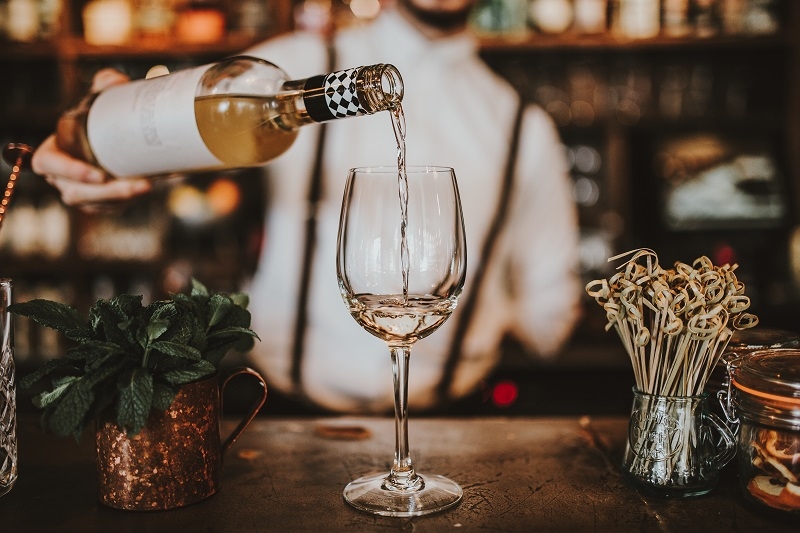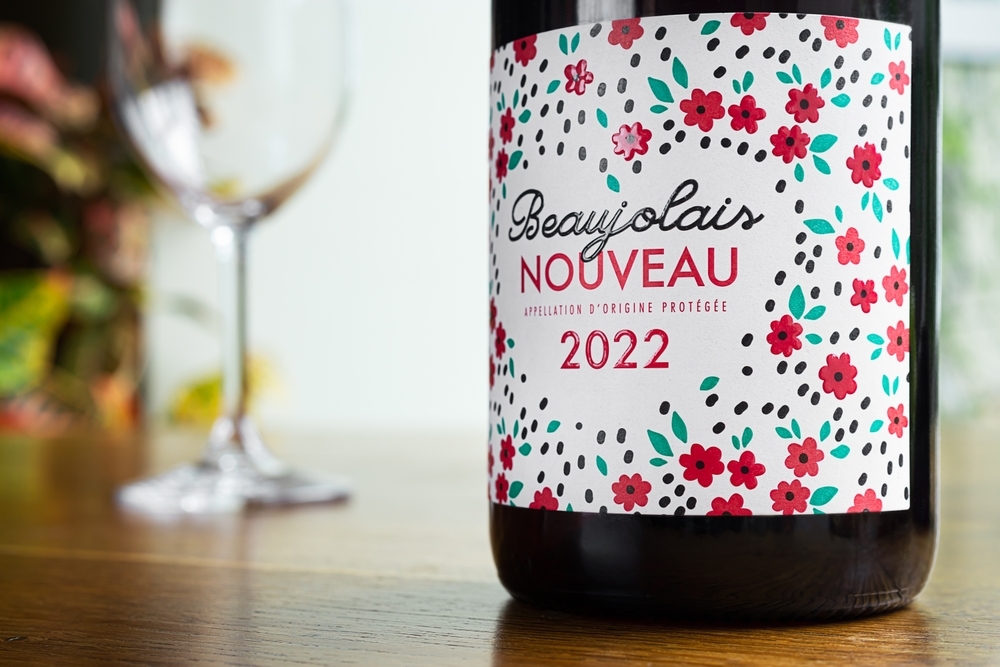Sparkling Wine vs Champagne: Find Out How They Are Different

When indulging in the luxurious world of sparkling beverages, few things rival the effervescence and sophistication of sparkling wine and champagne. These two libations have long been associated with celebration, romance, and moments of joy. However, despite their shared bubbly nature, there are distinct differences between them that discerning enthusiasts should be aware of.
What is Champagne?
Originating from the eponymous region in France, Champagne is the pinnacle of sparkling wine craftsmanship. The Champagne region's unique terroir, characterized by chalky soils and a cool climate, provides the ideal conditions for cultivating the grape varieties used in Chardonnay, Pinot Noir, and Pinot Meunier. However, it's not just the grapes that make Champagne unique; it's also the traditional winemaking methods employed in its production.
Champagne undergoes a labor-intensive process known as the Methode Champenoise or Mthode Traditionnelle, where secondary fermentation occurs in the bottle. This process involves adding a mixture of yeast and sugar (liqueur de tirage) to the base wine, triggering a second fermentation and forming iconic bubbles. The bottles are then aged on their lees for an extended period, contributing to Champagne's complexity and depth of flavor.
What is Sparkling Wine?

Sparkling wine is a broader category encompassing any wine with significant carbon dioxide levels, resulting in enthusiasm. Unlike Champagne, sparkling wine can be produced in various regions worldwide using multiple winemaking techniques. While some sparkling wines may emulate Champagne's traditional methods, others opt for more cost-effective techniques like carbonation in large tanks.
Sparkling wine offers many styles, flavors, and price points, making it accessible to many consumers. From Italy's crisp and refreshing Prosecco to the elegant and complex Cremant of France, there's a sparkling wine to suit every palate and occasion.
Different Types of Sparkling Wine
- Prosecco: Originating from the Veneto region of Italy, Prosecco is crafted primarily from the Glera grape. Known for its light body, fruity flavors, and floral aromas, Prosecco is a versatile and affordable option for everyday enjoyment.
- Cava: Hailing from the Penedes region of Spain, Cava is Spain's answer to Champagne. Made using traditional methods and often incorporating indigenous grape varieties such as Macabeo, Xarel-lo, and Parellada, Cava offers crisp acidity, citrus notes, and excellent value for money.
- Cremant: Produced in various regions across France, including Alsace, Burgundy, and the Loire Valley, Crmant is made using the traditional method but outside the Champagne region. With its fine bubbles, delicate mousse, and complex flavors, Crmant offers an affordable alternative to Champagne without compromising quality.
Also Read: Sweet and Dessert Wines: Explore Everything In Sweetness
Different Types of Champagne
- Brut: The most prevalent style of Champagne is characterized by its dryness and crisp acidity. With minimal residual sugar, Brut Champagne allows the true expression of the grapes and terroir to shine through.
- Ros: Made by incorporating red grape skins into the winemaking process, Rose Champagne exhibits a delicate pink hue and a spectrum of fruity flavors, ranging from red berries to stone fruits. Rose Champagne is elegant and refreshing for special occasions or romantic evenings.
- Vintage: Crafted from grapes harvested in a single exceptional year, Vintage Champagne is a testament to the unique characteristics of that specific vintage. With extended aging on the lees, Vintage Champagne offers unparalleled complexity, richness, and aging potential.
What are Bubbles in Champagne?

The bubbles in Champagne are not merely a decorative feature but a testament to the wine's quality and craftsmanship. During the secondary fermentation, yeast converts sugars into alcohol and carbon dioxide. Unlike still wines, where carbon dioxide is released into the air during fermentation, the carbon dioxide in Champagne is trapped inside the bottle, creating those delightful bubbles. The pressure from the carbon dioxide also plays a crucial role in preserving Champagne's freshness and aging potential.
Hallmarks of a Good Sparkling Wine
- Fine and Persistent Bubbles: Quality sparkling wines exhibit tiny, delicate bubbles that continue to rise gracefully in the glass, indicating proper aging and storage conditions.
- Complex Aromas: Aromatic complexity is a hallmark of a well-crafted sparkling wine. Look for a bouquet of nuanced aromas, including citrus fruits, stone fruits, floral notes, and hints of brioche or toast.
- Balanced Acidity: Acidity is essential in sparkling wine, providing structure, freshness, and balancehigh-quality sparkling wines balance acidity, sweetness, and fruitiness, creating a vibrant and refreshing palate.
Champagne versus Sparkling Wine
Dosage
One significant distinction between Champagne and sparkling wine lies in the dosage, the final addition of sugar and wine to adjust sweetness levels. Champagne typically undergoes dosage, allowing winemakers to fine-tune the wine's sweetness to achieve the desired style, whether Brut, Extra Brut, Sec, or Demi-Sec. In contrast, sparkling wines may or may not undergo dosage, depending on the winemaker's preferences and intended style.
Sweetness Level
Champagne and sparkling wines are available in various sweetness levels, catering to different tastes and occasions. While Brut Champagne is the most common style, with minimal residual sugar and a bone-dry palate, other styles such as Extra Brut, Sec, and Demi-Sec offer varying sweetness levels to suit different preferences.
Top Pairings
The versatility of Champagne and sparkling wine makes them ideal companions for a wide range of dishes and occasions. Regarding Champagne, classic pairings include oysters, caviar, smoked salmon, soft cheeses, and poultry dishes. Sparkling wine, on the other hand, pairs beautifully with various cuisines, from light salads and seafood to spicy Asian dishes and fried chicken.
Check This Out: The Perfect Pairing: Unlock the Secrets of Salmon and Wine
Glassware
While both Champagne and sparkling wine can be enjoyed in traditional flute glasses, some wine enthusiasts argue that wider glasses, such as tulip-shaped or coupe glasses, offer a better sensory experience, allowing the wine's aromas to develop and the bubbles to dissipate more slowly.
Also read: Choosing The Best Wine Glasses For You | How To Select?
Open and Serve
Opening a bottle of Champagne is a ritual in itself, often accompanied by the distinctive "pop" of the cork as it's gently released from the bottle. Some specialists even employ specialized cork removers known as "sabres" to open Champagne bottles with flair and precision. In contrast, many sparkling wines feature twist-off closures for convenience and ease of serving, making them ideal for casual gatherings and outdoor events.
Learn More: The Art of Wine Storage: How To Preserve Flavor and Quality
Conclusion
While Champagne and sparkling wine share a common traitbubblesthey offer distinct experiences shaped by their production methods, origins, styles, and serving suggestions. Whether you're sipping Champagne to celebrate a milestone moment or enjoying a glass of Prosecco with friends on a lazy Sunday afternoon, these effervescent libations never fail to add sparkle to any occasion. Cheers to the joy of bubbles!
FAQs
Is Champagne only produced in France?
Yes, true Champagne is exclusively produced in the Champagne region of France, under strict regulations and quality standards set forth by the Comit Interprofessionnel du Vin de Champagne (CIVC).
What is the ideal serving temperature for sparkling wine?
Sparkling wine is best served chilled to enhance its crispness, enthusiasm, and overall refreshing character. The ideal serving temperature for sparkling wine ranges from 45F to 50F (7C to 10C), ensuring that the wine's flavors and aromas are showcased to their fullest potential.
Can I age sparkling wine like Champagne?
While some high-quality sparkling wines can benefit from aging, most are intended for immediate consumption to enjoy youthful vibrancy, fruitiness, and enthusiasm. On the other hand, Vintage Champagnes are renowned for their aging potential, with the ability to develop complex tertiary aromas and flavors over time.
This content was created by AI
No keywords available
-1717753922-r.jpg)


